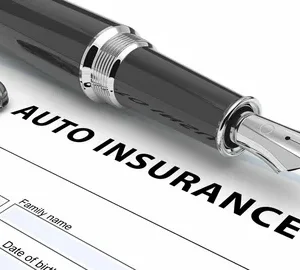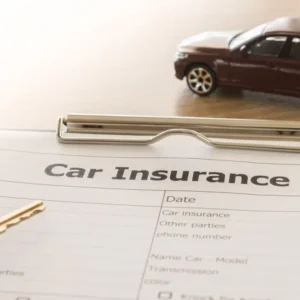Introduction
Imagine the screech of tires, the jarring impact, and the swirl of confusion that follows a car accident. In that chaotic aftermath, filing an insurance claim can feel like navigating a labyrinth—one wrong turn, and you risk leaving money on the table. But it doesn’t have to be that way. With a clear, methodical approach, you can file your claim efficiently and position yourself for the maximum payout, fast. This guide walks you through each step, blending practical insights, essential comparisons, and proven tactics so you know exactly what to do and when to do it.
By the end of this post, you’ll understand:
- How to act immediately after the crash
- What evidence insurance adjusters need
- Which deadlines and forms matter most
- How to negotiate like a pro
- When DIY works versus when to hire an attorney
Let’s dive in.
Understand Your Insurance Policy
Before you hit the road, take a moment to review your policy. Knowing your coverage limits, deductibles, and whether you carry collision, comprehensive, or uninsured motorist protection will shape your strategy from start to finish. For example, collision coverage handles damage to your own vehicle regardless of fault, while third-party claims (filed against the other driver’s insurer) follow a different timeline and have distinct documentation requirements (see “First-Party vs. Third-Party Claims” below).
Pro Tip: Keep a PDF of your policy in your smartphone’s wallet app or insurer’s mobile app for instant access.
Immediate Actions After the Crash
Taking the right steps on the scene doesn’t just protect your well-being; it sets the stage for a smooth claim.
- Ensure Safety & Call 911
- Check for injuries and move to safety if possible.
- Dial 911 for medical aid or police, even for minor accidents—an official report is invaluable for your claim (Allstate’s accident checklist (Allstate)).
- Exchange Information
- Record names, phone numbers, insurance details, and license plate numbers for all drivers and witnesses.
- Note the responding officer’s name and badge number, and request a copy of the police report when available (Progressive guidance (Progressive)).
- Document the Scene
- Take wide-angle and close-up photos of damage, skid marks, and road conditions.
- Sketch a diagram if you can—it helps reconstruct the accident later (III recommendations (III)).
- Seek Medical Attention
- Even if you feel fine, some injuries manifest later. A prompt exam creates a medical record linking your injuries to the crash, which boosts your claim’s credibility (Nolo on injury documentation (Nolo)).
Gather and Preserve Evidence
Insurance adjusters value hard evidence: the more robust your documentation, the stronger your position.
- Police & Accident Reports
Request a copy of the official report as soon as it’s available; many insurers require it when you submit a “proof of claim” form (III on proof-of-claim (III)). - Photos & Videos
Organize your images chronologically. Highlight details like odometer readings, damage extent, and road signage. - Repair Estimates & Invoices
Get at least two independent repair quotes to demonstrate the true cost of fixing or replacing your vehicle. - Medical Records & Bills
Track every doctor visit, diagnostic test, therapy session, and prescription. Detailed bills undercut adjusters who might lowball your medical damages. - Lost Income Documentation
If you miss work, collect pay stubs, a letter from your employer, and tax returns. This substantiates your “economic damages” claim (Nolo’s valuation guide (Nolo)).
Notify Your Insurance Company
Time is of the essence. Most policies stipulate reporting deadlines—often within 24 to 72 hours of the incident.
- First Notice of Loss (FNOL)
- Call your agent or use the insurer’s mobile app to submit FNOL as soon as possible. Many companies let you jumpstart your claim via app—upload photos, track status, and even schedule a rental car (III mobile app tip (III)).
- Provide Accurate Details
- Stick to facts. Inconsistent statements can be used to dispute your claim later.
- Obtain Your Claim Number
- Use it on all communications and paperwork to keep everything organized.
File the Claim: Step-by-Step
Once FNOL is done, your insurer assigns an adjuster. Here’s how to move forward deliberately:
- Complete the Proof-of-Claim Form
- Return it promptly, attaching the police report, photos, and estimates.
- Meet with the Adjuster
- Walk through the damage. Present your documentation and politely point out overlooked items.
- Review the Adjuster’s Estimate
- Compare it to your independent quotes. If there’s a gap, discuss supporting evidence (see the table below for typical discrepancies).
- Understand Depreciation & Deductibles
- Adjusters factor in depreciation when valuing parts. Review your policy’s replacement cost vs. actual cash value clause.
- Request a Written Explanation for Denials or Low Offers
- If you disagree with an adjustment, an insurer must explain their reasoning. Use this to craft your counteroffer.
Table: Common Adjuster Estimates vs. Independent Quotes
| Item | Adjuster Estimate | Independent Quote | Difference | Notes |
|---|---|---|---|---|
| Front Bumper Replacement | $1,200 | $1,550 | +$350 | Adjuster used aftermarket parts |
| Windshield Replacement | $400 | $450 | +$50 | OEM vs. generic glass |
| Paint & Labor (per panel) | $250 | $325 | +$75 | Adjuster minimized labor hours |
| Medical Treatment (ER visit) | $1,000 | $1,200 | +$200 | Includes facility fees not in adjuster’s estimate |
Compare DIY vs. Attorney-Assisted Claims
Knowing when to go it alone versus hiring professional help can be the key to a higher settlement.
| Factor | DIY Claim | Attorney-Assisted Claim |
|---|---|---|
| Cost | No upfront fees; subject to deductible | Contingency fee (typically 33%) |
| Complexity | Ideal for clear-cut property damage | Best for significant injuries/fault disputes |
| Time Commitment | You manage all communication | Attorney handles paperwork and calls |
| Negotiation Power | Potentially lower leverage | Strong bargaining position |
| Stress Level | Higher—do your own legwork | Lower—you focus on recovery |
- When to DIY:
- Property damage under $5,000
- No or minor injuries
- Clear liability
- When to Hire an Attorney:
- Serious bodily injury or long-term care
- Uninsured/underinsured motorist claims
- Disputed fault scenarios
- Initial offer is significantly below your documented damages (Nolo on lawsuits vs. settlement (AllLaw)).
Tips to Maximize Your Payout
Follow these insider tactics to boost your claim value:
- Don’t Rush to Settle
Wait until you reach Maximum Medical Improvement (MMI) before accepting offers on personal injury—premature settlements can bar future claims for ongoing care (Nolo on MMI (Nolo)). - Bundle Multiple Damages
– Combine medical bills, lost wages, property damage, and pain & suffering in a single demand letter. - Frame Non-Economic Losses
– Detail how your quality of life has changed—lost sleep, therapy costs, emotional distress. - Leverage Gap Insurance if Totaled
– If your financed or leased car is declared a total loss and you owe more than its value, gap insurance closes the shortfall (Investopedia on total loss (Investopedia)). - Use Expert Testimony
– Hire accident reconstructionists or medical experts for complex cases—add gravitas to your demand.
Negotiation and Settlement
Negotiation isn’t a one-sided conversation—it’s a strategic dance.
- Write a Persuasive Demand Letter
- Open with a concise summary, present your evidence, and end with a specific dollar figure and deadline (e.g., “I request $25,000 within 30 days”).
- Respond to Lowball Offers
- Counter with a detailed breakdown of costs and introduce new evidence if available.
- Invoke Policy Provisions
- Reference your policy’s “duty to defend” and “prompt payment” clauses to push for a timely resolution.
- Consider Mediation
- A neutral third party can facilitate agreement without going to trial, saving time and fees.
- When to File Suit
- If negotiations stall beyond the statute of limitations (typically 1–3 years depending on your state), consider litigation to preserve your claim.
Common Pitfalls to Avoid
- Delaying Medical Care: Late treatment gaps raise doubts about causation.
- Inconsistent Statements: Stick to your documented account—additional embellishments can be used to impeach you.
- Posting on Social Media: Insurers scour profiles for evidence that you’re exaggerating injuries.
- Accepting First Offer: The initial check rarely reflects full damages—counteroffer based on your documentation.
Conclusion & Call to Action
Filing a car accident claim doesn’t have to feel like navigating a maze. By understanding your policy, acting decisively after the crash, and meticulously documenting every detail, you set the stage for a swift, maximum payout. Whether you go the DIY route or enlist legal counsel, use this guide as your roadmap.
Ready to take the next step? Download our free Checklist & Claim Timeline PDF to track deadlines, evidence, and your claim status. And if you’re ever unsure, consult a qualified attorney to make sure your rights—and your wallet—are fully protected.






